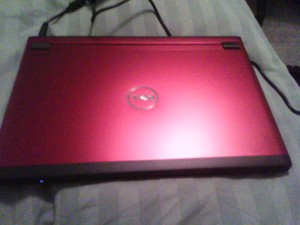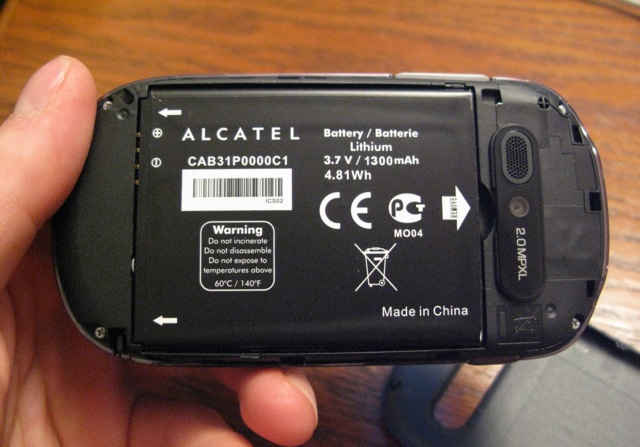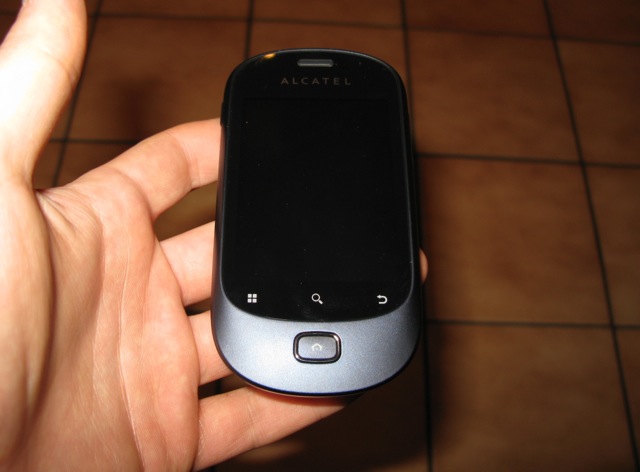
There is no doubt that Android is scalable — from tiny phones to large tablets the OS has been shoehorned into anything with a screen. So it should come as no surprise that manufacturers are taking the free software and putting into devices in the same price range as some feature phones.
The Alcatel OT 908 is one such device. For $120 outright you get a full-featured, limited-capability Android smartphone, more than enough for most users looking to make that step up to a smartphone without spending too much or signing a commitment. Is it worth the meagre investment? Let’s find out.
Specs:
– Android 2.2 Froyo
– 2.8″ 240×320 pixel capactive display (256k colours)
– 600Mhz processor
– 384MB RAM, 150MB internal storage
– 2MP camera
– WiFi (b/g), Bluetooth 3.0, A-GPS
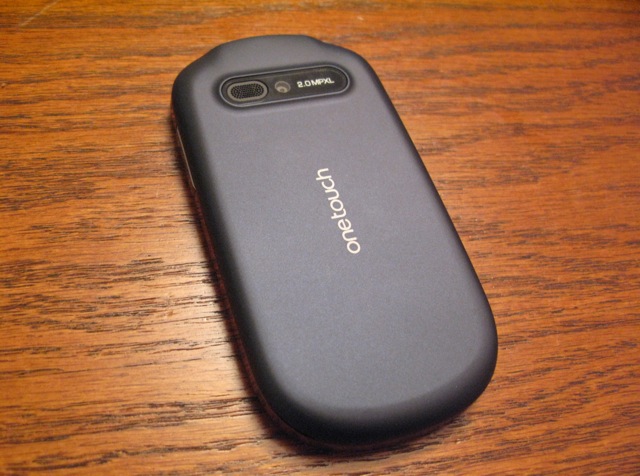
The Phone
There isn’t much to the OT 908. It’s round and stout with a plastic construction that is by all rights more sturdy than some devices twice the price. At 12.4mm thick its pebble design sits comfortably in the hand.
All the ports you’d expect from a modern smartphone are present: a 3.5mm headphone jack on top next to a microUSB port. There’s a volume rocker on the right side and a power button on the left, with a slim chrome bezel circumnavigating the perimeter. On the front, below the screen, are three capacitive touch buttons and a physical home button. There is no haptic feedback on the buttons, which is odd, so at times we found ourselves unsure whether our presses were accomplishing anything.
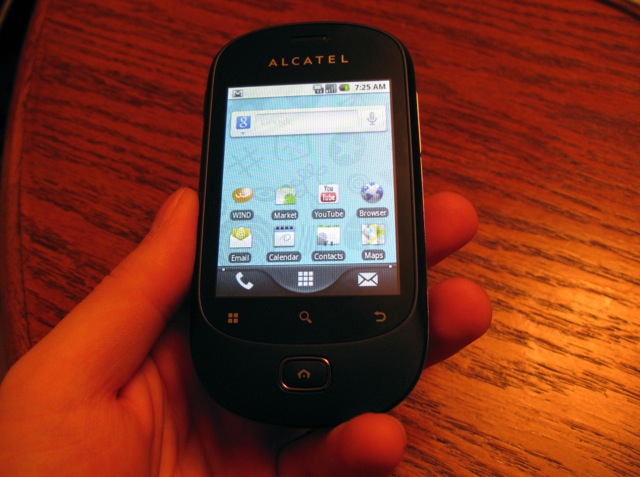
The screen is cheap, to put it mildly. With only 256,000 colours and a paltry 143ppi pixel density, it is the phone’s biggest shortcoming. Colours are washed out, viewing angles are mediocre and text is grainy. There is visible aliasing and ghosting when scrolling caused by the cheap LCD panel; it is a combination of high latency and poor image quality. At the same time, due to the small physical size of the display, the Android interface seems pinched together and difficult to navigate.
On the back of the device is a 2MP camera, sans flash, which takes decent shots at a 1600×1200 resolution. The OT 908 uses the standard Android camera UI to good effect.
Where the Alacatel goes right is with its connectivity features. It has Wi-Fi, Bluetooth 3.0 and A-GPS, with support for Google’s free turn-by-turn Navigation software. It can also play music via A2DP-enabled Bluetooth headphones, making it an affordable media player with microSD expansion up to 32GB.
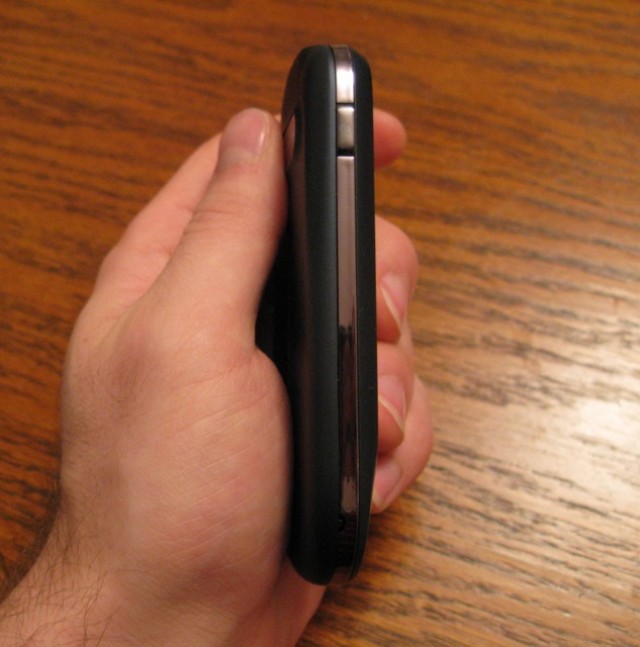
What’s Good
With a 600Mhz processor and 384MB RAM, the Alcatel OT 908 runs Android 2.2 extremely smoothly. For many users this will be their first smartphone purchase, and will need to take a while to get accustomed to the Android interface. There are five home screens, each of which are preloaded with app icons and widgets. Unlike many other Android devices, there is no software layer or bloatware to bog down the operating system.
While the processor isn’t fast enough to run the latest games, with access to the Android Marketplace it’s not going to be hard to find a few that play just fine. We loaded the ubiquitous Angry Birds and found that while it was a little cramped it played smoothly. And for browsing the device supports multitouch pinch-to-zoom.
We found that music sounded great on the device, and though it comes with just a 2GB microSD card it can be expanded to 32GB, making for a relatively cheap media player. Videos from the YouTube app loaded quickly over Wind’s 3G+ network, and we had five service bars in most areas around Toronto; it’s clear that the carrier has done some serious upgrades to its infrastructure in recent months.
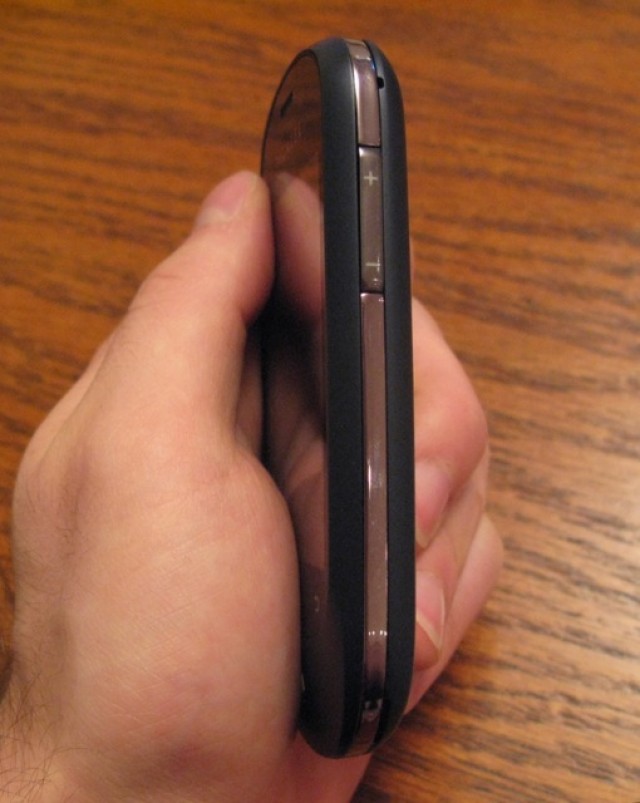
Calls sounded excellent through the headset and even the mono speaker near the camera made for an excellent speaker phone. If talking is something you like to do, we’re pleased to say that battery life was astoundingly good. The 1300mAh battery takes up nearly the entire back of the phone, and we got nearly a week of minor usage from a single charge. Normal use should net you two to three days without issue.
If you’re into texting, the OT 908 wisely comes preinstalled with the excellent Swype keyboard, which allows you to move your fingers from one key to the other in a single movement to form words. It’s intuitive and fast, and really the only full QWERTY keyboard suitable for a device this size.
Wind has included some useful apps for the average user: Facebook, Twidroyd and Shazam are three well known apps, along with PicSay photo editor, Ringdroid ringtone creator, OfficeSuite for content creation, Layar for augmented reality and Accuweather. There’s even a fun game called Bebbled which requires you to join three or more bubbles of the same colour for points. The phone also comes with an FM radio app.
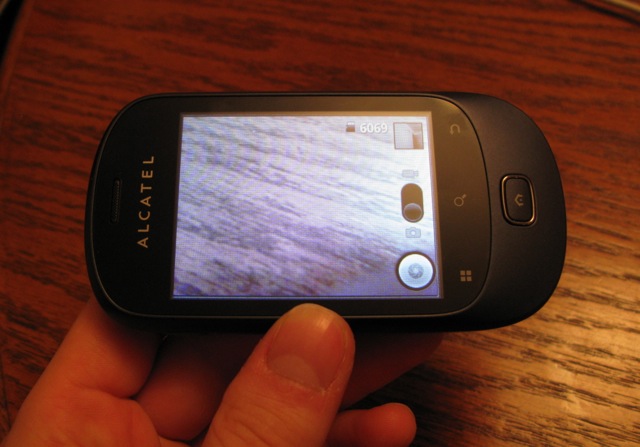
The Not So Good
For $120 there are inevitably going to be a few sacrifices, and the Alcatel OT 908 has a few of them. From the screen to the size to the speed, this is dated technology. And while Android was meant to be used in many configurations, it doesn’t scale particularly well to a 2.8″ display.
This phone is not for those who do a lot of web browsing, as there isn’t enough screen real estate to accommodate large web pages. Despite having a relatively speedy data connection, many sites took twice to three times the length to load as on our Nexus S. While the Android browser supports Flash, pages with the plugin tended to crash the app or failed to load. If video is your thing, we’d stick to the dedicated YouTube app.
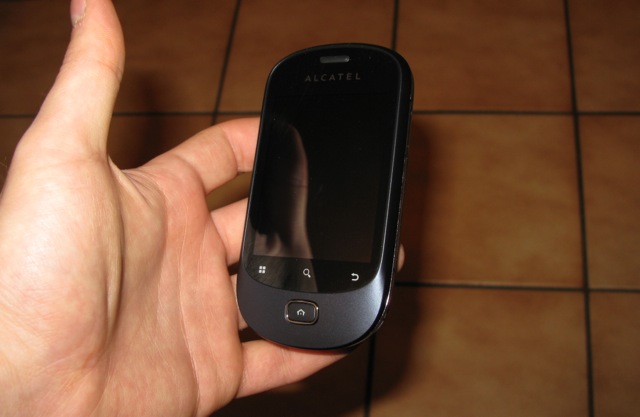
Another clear cost-cutting measure is the camera which, at 2MP, produces shots we’d compare to that of a Motorola RAZR, not a typical smartphone. Photos lack detail or depth, and colours are muted. Low-light shots are a smudgy blur. The lens is also fixed-focus, making macro shots impossible. Video too, which maxes at 800×480 WVGA resolution, fares no better. Results are grainy and low-fidelity, producing video that is barely YouTube-ready.
As for internal storage, of the 150MB inside the phone only 75MB is available for applications. While it is possible to transfer any of them to the SD card, the limited storage space will inevitably cause trouble to those who want to fill their devices with the latest apps and games.
Finally, we had a lot of issues with the screen registering our key presses. While there is, ironically, haptic feedback available to screen presses, we found that when we had to manually type on the keyboard, or click a link to a web page, it would take two or three tries for our touch to be registered.
Conclusions
Wind Mobile has curated a fine line of low-cost Android devices, and the Alcatel One Touch 908 is a good example of that. With excellent build quality and a robust featureset, it’s an excellent alternative to buying a feature phone on another network. It’s a great gateway smartphone, too; for $120 it’s an effective way to dip your toes into Android without breaking the bank.
As a phone it performs ably– calls are clear and loud, and it’s relatively easy to respond to text messages and IMs quickly. Paired with one of Wind’s reasonably-priced data plans, it can be used as a WiFi hotspot and a turn-by-turn GPS navigation unit. It gets the job done in many other respects, and where it fails it can fall back on its low price.
We’d recommend the OT 908 as an entry-level smartphone for first-time users and teens, or anyone looking to bring down their total cost of mobile ownership.
Rating: 6/10
Pros:
– Excellent build quality for the price
– Superb battery life
– Works great as a basic call and texting device
– Robust connectivity featureset including WiFi hotspot and GPS
– Extremely attractive price point for an entry-level smartphone
– microSD card slot expandable to 32GB, makes for a great music player
Cons:
– Screen is small and aliased, with high latency and low colour fidelity
– Camera produces blurry, washed-out shots
– Video results are similarly bad
– Sluggish performance
– Can’t play many games from the Marketplace
– Small amount of app storage
– No haptic feedback on the capacitive touch buttons
MobileSyrup may earn a commission from purchases made via our links, which helps fund the journalism we provide free on our website. These links do not influence our editorial content. Support us here.

